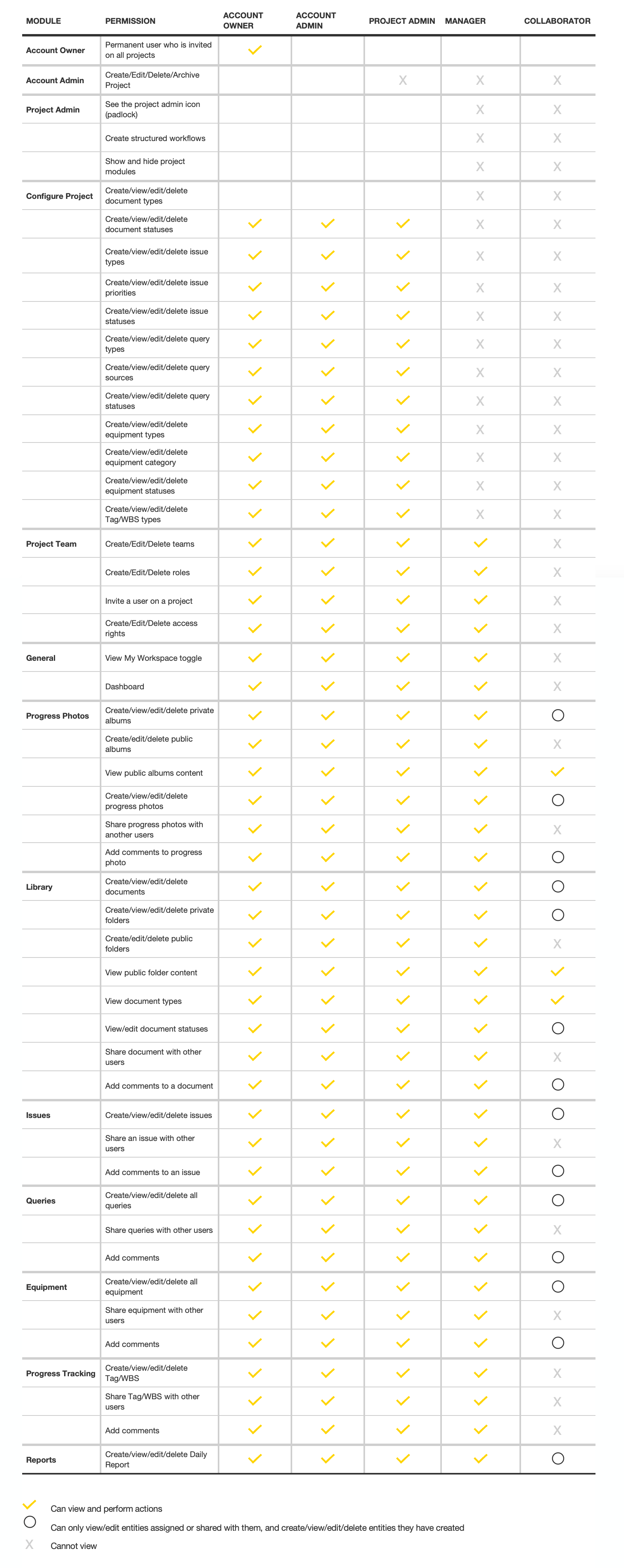K-Ops Roles
The following article describes each of the K-Ops Roles and details their access permissions.
User Roles Defined
Account Owner
The Account Owner is the one who is responsible for the K-Ops account; they cannot be deleted or deactivated. Account owners are automatically invited to all newly created K-Ops projects.
Account Admin
The Account Admin is a top-level user who has full rights and permissions within a project, plus the rights to create, edit, archive, and delete projects. They also have the permissions to define datasets, which are used to create templates that will be applied throughout the whole company. Every K-Ops company account needs at least one Account Admin user.
Project Admin
The Project Admin is a top-level user who has full rights and permissions within a project. They define workflows or select the appropriate modules for the project. The Project Admin can invite users and assign them specific roles and teams, as well as determine the access permissions for each role, team, and user. They can convert users to collaborators and vice versa if needed. They also define the different types or subtypes of entities that are going to be used on the project such as documents, issues, queries, equipment, and tags. This type of role is usually what is referred to as the Project Coordinator.
Manager
The Manager is a user who has access to all information relating to the project they have been invited to collaborate on. They have access to the “My Space” and “Managers” modules and have the possibility to access the “Project Management” module to use functions such as the Dashboard, the Planner, Project Tracking, and the Project Team. Even though the Manager does not possess access to the “Project Admin” module, they can still manage the Project Team by inviting or deactivating collaborating members on the project.
Collaborator
The Collaborator is typically a member of the project team, similarly to the subcontractor, foreman, team lead, or any other laborer that requires access to the K-Ops data, but has a limited viewing permission, i.e., non-management and non-organizational views. These types of users only need to see and have access to the scope of work that is particular to them for the project they are collaborating on. They can only see or act upon data they have created, that has been assigned to them, or that has been shared with them through a public folder or individually, through a manual process. Collaborators usually must perform active tracked or recorded tasks on the job site.
The Collaborator’s level of access in the K-Ops UI is divided into 6 sections:
- My Documents and Progress Photos
- Create or upload documents into a public folder, if such a folder already exists, or into a private folder that is manually shared with them.
- Markup and edit document details such as name, description, status, dates…
- Delete documents and folders that only they have created.
- My Issues, My Queries, My Equipment, and My Reports
- Markup and edit document details such as name, description, status, dates…
- Delete documents and folders that only they have created.
Roles Permissions Matrix
The following table shows which features are available to each Role in K-Ops.
